
Labradorite occurs in two forms, massive rock outcrops useful in construction and lapidary work. It is also found in small crystalline and gemmy phenocrysts in volcanic rock suitable for faceted jewelry. It is most often found as huge rock masses that outcrop in areas as part of huge plutonic intrusive formations. These rock-like masses of labradorite often show various colors that flashback at the viewer when the rock is tilted and moved. The crystalline gem phenocrysts are much less common and can be a variety of colors. With a hardness of six to six and one-half, they can be used as faceted gemstones when properly set.
The remarkable play of colors seen in massive labradorite is predominantly blue, but flashes of bronze, golden, red, green and yellow show up as a piece is rotated or moved under a strong light source. Both exciting massive and gemmy types of labradorite can be self-collected. Outcrops of massive labradorite are found in a host of countries, including the United States, where it has been mined as a decorative stone for carvings and less often for jewelry.
CANADIAN DISCOVERY
Massive labradorite was first collected on the Isle of Paul, near Nain, Labrador, Canada, hence the name for this calcium, sodium aluminum silicate. There are other nearby Labrador sources, but the material from near Nain collected in 1770 created quite a stir. The specimens collected showed a remarkable play of colors that excited scientists and triggered a search for more such beauty. It was later found in even more spectacular form in Tvedestrand, Kragero, Norway and surrounding environs. Finland yielded the most spectacular labradorite at Ylamoa, Lammenpa. Some pieces were so colorful as to be called spectrolite. Later, Russia and elsewhere produced equally exceptional labradorite.
This story is from the June 2021 edition of Rock&Gem Magazine.
Start your 7-day Magzter GOLD free trial to access thousands of curated premium stories, and 8,500+ magazines and newspapers.
Already a subscriber ? Sign In
This story is from the June 2021 edition of Rock&Gem Magazine.
Start your 7-day Magzter GOLD free trial to access thousands of curated premium stories, and 8,500+ magazines and newspapers.
Already a subscriber? Sign In
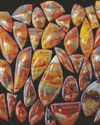
MORGAN HILL POPPY JASPER
In California, there are very few places to collect semi-precious stones. Many locations from the past have been either exhausted of the material or the land has been developed.
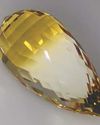
THE ACORN
The briolette gemstone has the same design attributes of a regular gemstone, however, the pavilion is elongated and the crown is usually domed. This is perfect for an elegant pendant, earrings or a pendulum.
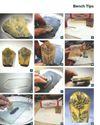
HOW TO PUT A PROTECTIVE CAP ON A CAB
To protect a specimen cab, often a cap is needed. In my case, I had a slab with the because of the color of the background and the pattern. This background had a more silicified consistency than most sandstones. It had no graininess like most sandstone, so I'm inclined to compare it to a jasper. The pattern was typical of a dendrite.

The Resilient Revival of Anne Brontë & Her Stones
For the first time, the Anne Brontë rock collection underwent complete description and identification, and along with Professor Hazel Hutchison of Leeds University and Dr. Enrique Lozano Diz at ELODIZ (a company specializing in spectroscopy analysis), an analysis of that collaboration, Anne Brontë and Geology: A Study of her Collection of Stones, was published in April 2022 in Volume 47, Issue 2 of the peer-reviewed journal, Brontë Studies & Gazette.\"

Amazing Women with Rock-Solid Careers
Explorers, Geologists, Educators & Jewelry Makers...
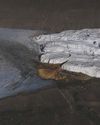
The Case of the Bleeding Glacier
It's a gory sight called Blood Falls. Ever since British geologist Thomas Griffith Taylor first noted it in 1911, it has been a mystery.
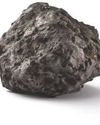
Asteroid Samples Are Said to Hold Invaluable Secrets
If Only Scientists Can Pop the Lid!
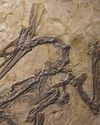
Paleontologists Embrace a New Method for Seeing Fossils within Rock
Fossil bone can be delicate. Attempts to remove it from a hard rock matrix by picking and scratching or etching with acids can be time-consuming and/or may end up obliterating that which you hope to study.

Need a Map of the Ocean Floor?
Call in the Seals!

A Step Closer to Hydrogen, the "Climate-Friendly Fuel"
As I reported last June, the world is racing to find sustainably renewable, nonpolluting sources of energy to replace our carbon-based reserves of coal, oil and gas.